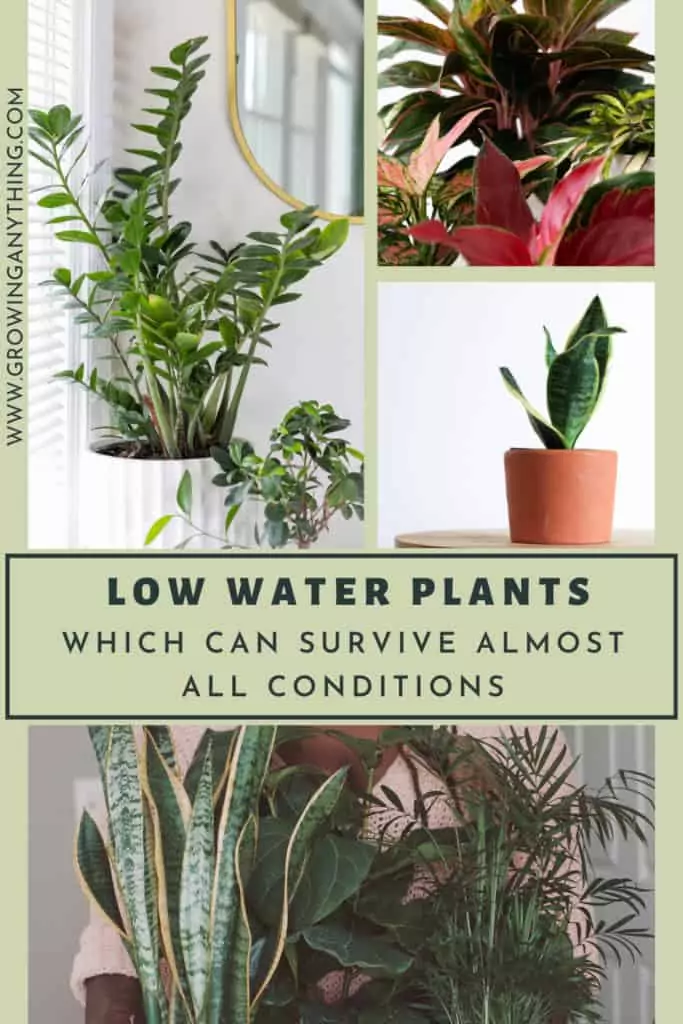40 Low Water Plants
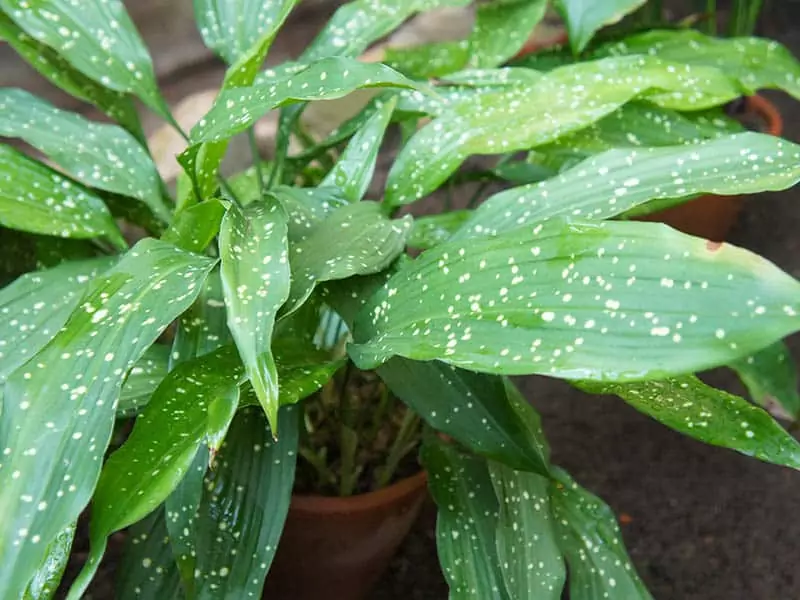
Are you desperate to find low water plants and stop feeling bad if you forget to water your greens? Good news, you’ve got plenty of plants to choose from!
I made a list of plants with minimal moisture needs which will survive hot and dry summers and extensive drought. Most of the plants from my list have lush and rich foliage and look stunning outdoors and indoors.
Let’s take a look at low-water houseplants and garden plants!
These plants thrive on neglect and will reward you with a beautiful appearance with your minimal efforts!
1. ZZ Plant
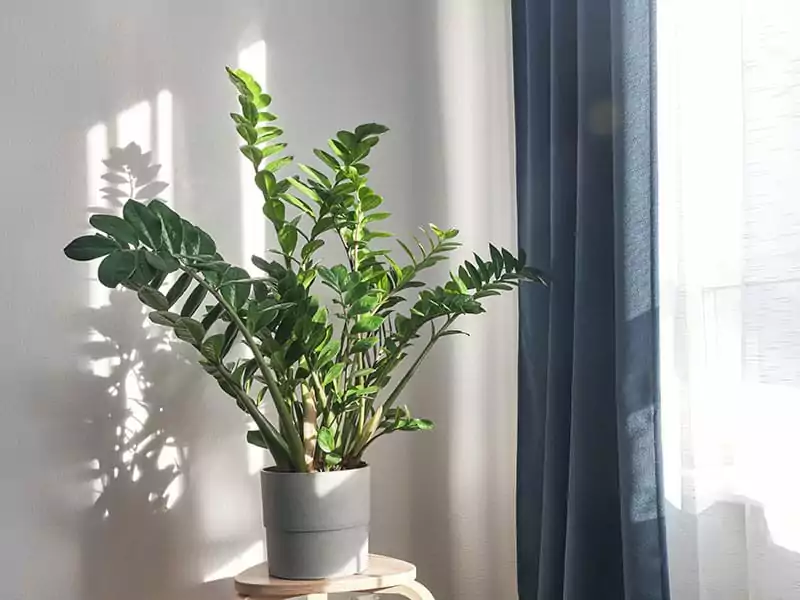
ZZ plant or Zamioculcas zamiifolia is a beautiful tropical, low-maintenance, low water plant. Because it is adaptable to various conditions, ZZ plant popularity has been increasing. The ZZ plant has three-inch-long individual leaflets with a glossy texture. Not only is the ZZ plant tolerant of drought, but it can also survive in low light conditions.
Only water the plant once a month, but check if the soil is dry between waterings.
2. Red Aglaonema
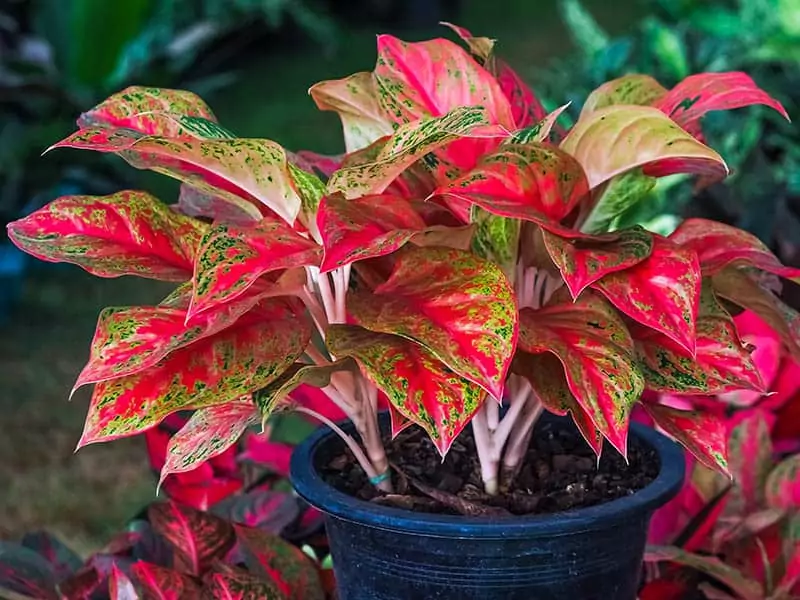
Red Aglaonema is an easy-care plant that brings the pop of color to the dark corners of your home! Moreover, Red Aglaonema or Chinese Evergreen is a popular toxin-removing plant for every household.
However, it is toxic to pets, so keep it away from cats and dogs.
Red Aglaonema needs bright indirect light, but can adapt to partial shade. You can water it once a month or sooner if the soil is dry.
3. Bromeliad
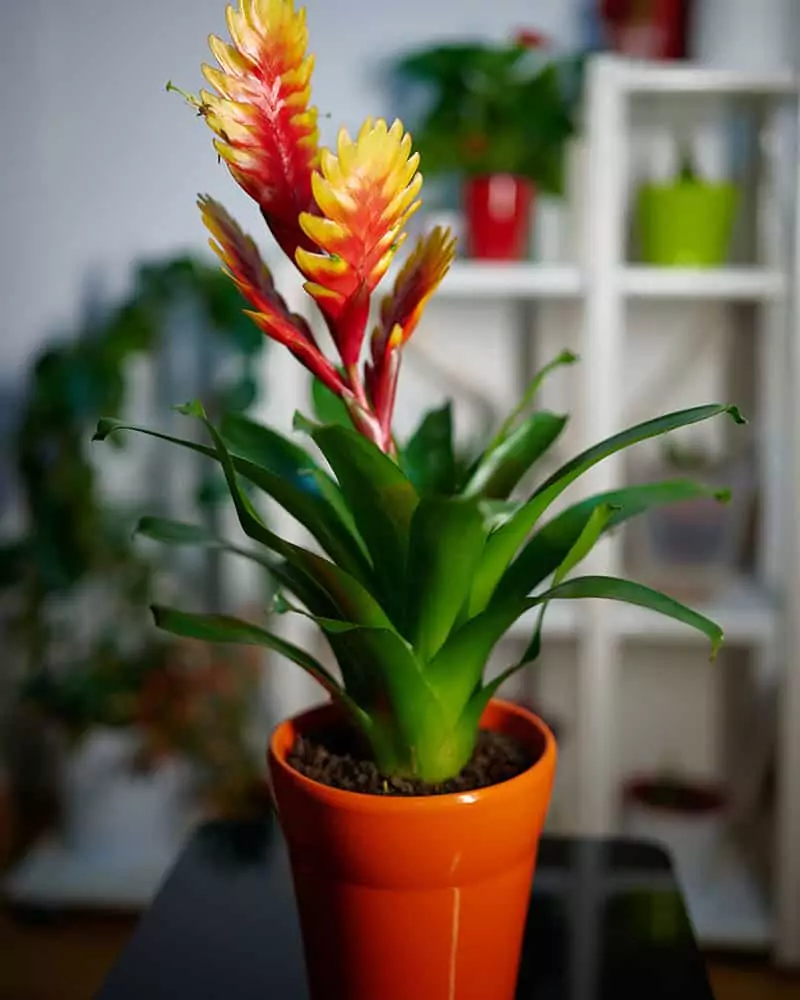
Bromeliads are beautiful, low-maintenance plants that can thrive in different climates. If you decide to grow Bromeliads indoors, you won’t regret it! These plants are known to withstand extensive drought periods without issues. In fact, it is better not to water Bromeliads, than to over-water them.
The exact light requirements for Bromeliads depend on the variety. So, when you buy the plant in the nursery, ask more about the plant’s lighting preferences.
4. Ox Tongue
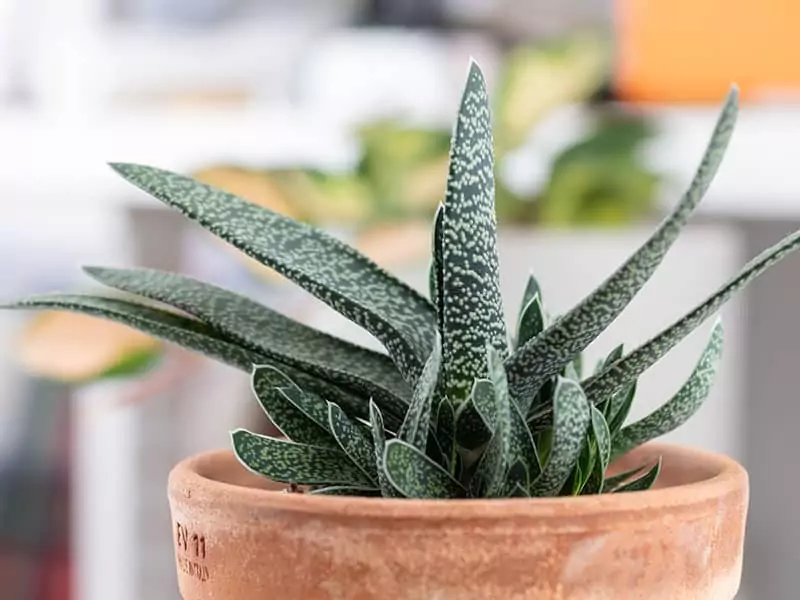
Ox Tongue or Gasteria plant is a rare succulent plant that looks like Aloe Vera with long and rough foliage. The succulent blooms in the late winter with lovely tubular flowers which remain good looking through the spring.
Ox Tongue is native to South Africa. It grows in dark and dry areas. You can start it in the spring for best results, and the overall care is simple.
5. Snake Plant

Snake plant is suitable for outdoor gardens in zones eight and warmer. Elsewhere, you can grow a Snake plant indoors. It needs bright, indirect sunlight. Also, in colder climates, Snake plants can tolerate low amounts of direct sunlight. Before you water the Snake plant, check the soil.
The top two inches of the soil should be completely dry between waterings. Too much moisture leads to fungal diseases, root rotting, and death of your Snake plant.
Don’t let your Snake plant die.
6. Ponytail Palm
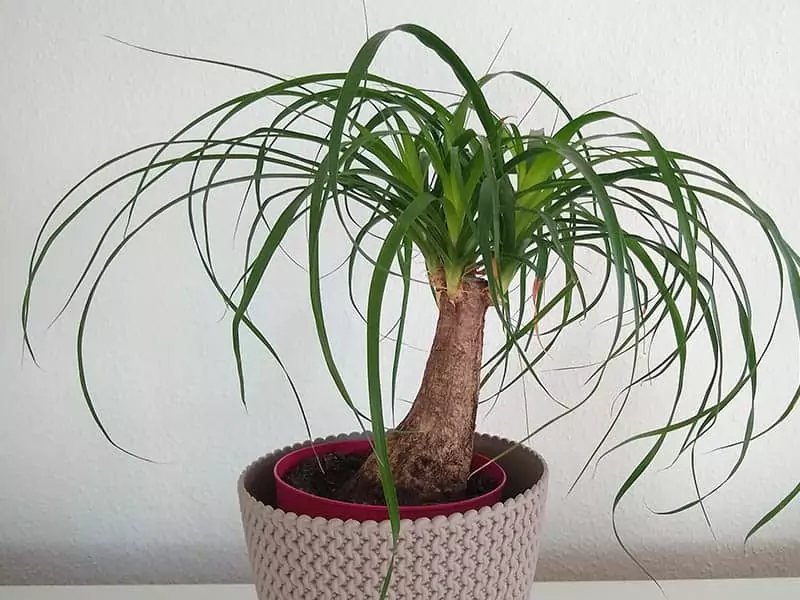
Ponytail palm thrives in the bright spot when exposed to filtered light. Therefore, the ideal location for Ponytail palm is near a sunny window. However, the palm may adapt to lower light conditions. When taking care of a Ponytail palm, keep it protected from the cold draft and AC unit.
The ideal temperature range for Ponytail palm is between 60 and 80 degrees. Only water your palm when the soil is dry. Sometimes, it can mean you will only water the plant once a month!
Things to know before your prune Ponytail plant.
7. Philodendron
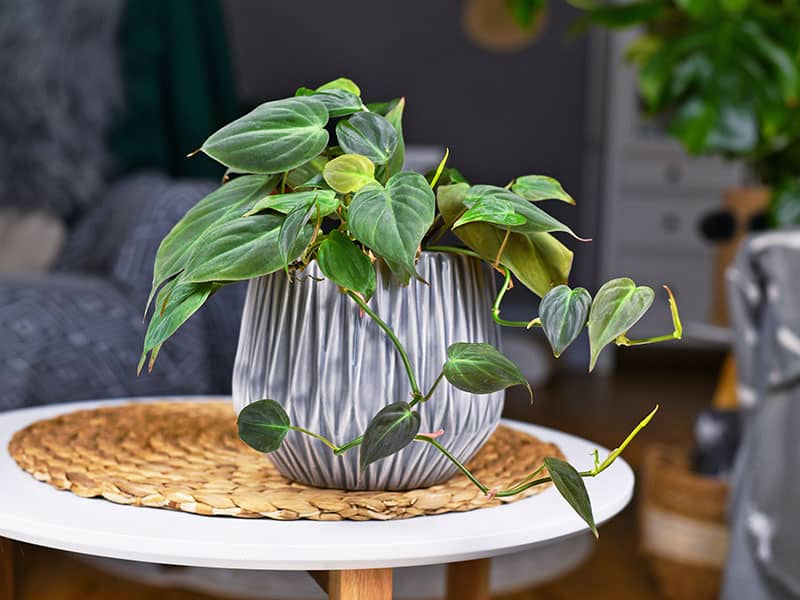
Most Philodendron varieties only need watering once every two weeks. On the other hand, Philodendron needs regular pruning to remain good-looking and tidy.
To boost the growth of your Philodendron, feed the plant once a month with an all-purpose fertilizer. Also, don’t forget that Philodendron is toxic to children and pets.
Once it overgrows the current pot, repot it to a bigger one.
8. String of Pearls
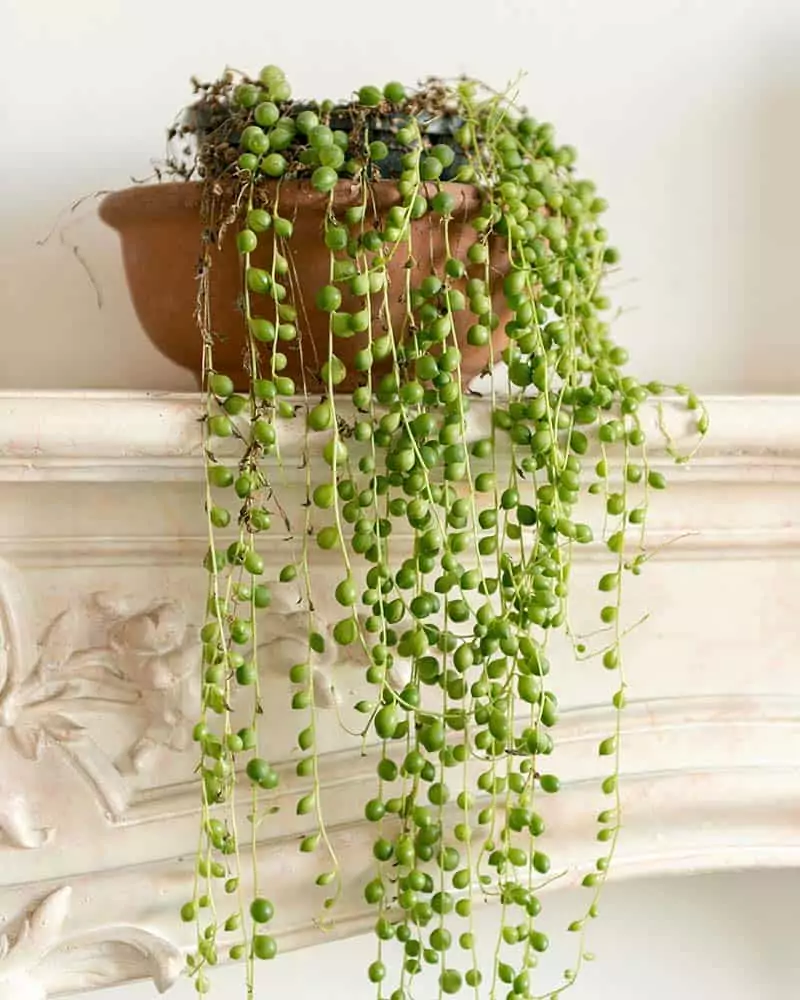
String of Pearls is one of the succulents which can survive the longest periods without water. Another great thing about String of Pearls is that you can easily propagate it and share it with others.
When the time comes for pruning, you can take cuttings and distribute the plant with others! Because it is a low-maintenance, attractive trailing succulent plant, it makes a perfect housewarming gift!
String of Pearls looks best in hanging baskets, and you can grow it indoors during colder parts of the year. Bring it outdoors in the summer.
9. Devil’s Backbone
Devil’s Backbone is a fun-looking, easy-care houseplant. It is often called a Zig Zag plant. It needs a bright spot, but too much direct sunlight results in pinkish or bronze almost burnt foliage.
Next, Devil’s Backbone doesn’t mind different humidity levels. Moreover, the plant isn’t picky about the soil as well.
Fertilization and pruning are optional. Apart from its low-maintenance nature, people also grow the Zig Zag plant because of its air-purifying capabilities!
10. Orchids
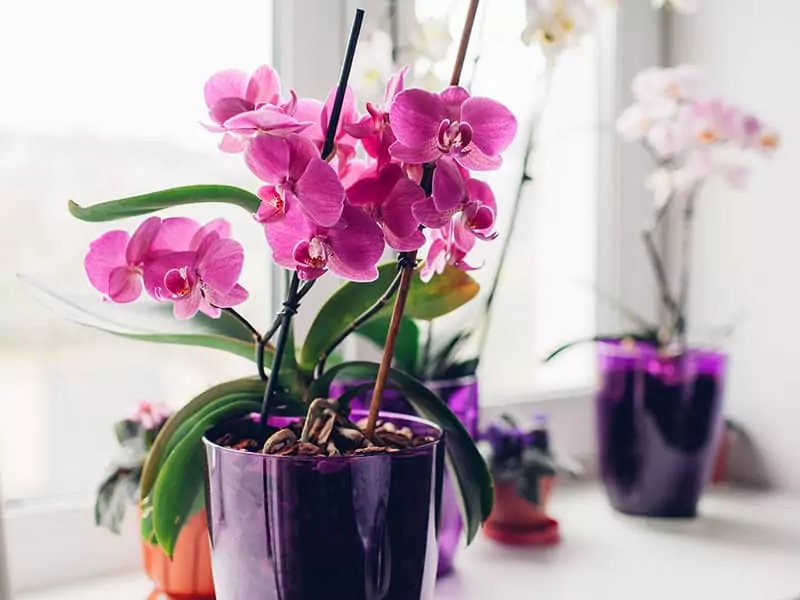
Orchids are infamous as tricky to grow.
The best way to water Orchids is to use the soak and dry method. Once a month or sooner, soak the plant in water and let the soil dry before you water it again.
11. Yucca Plant
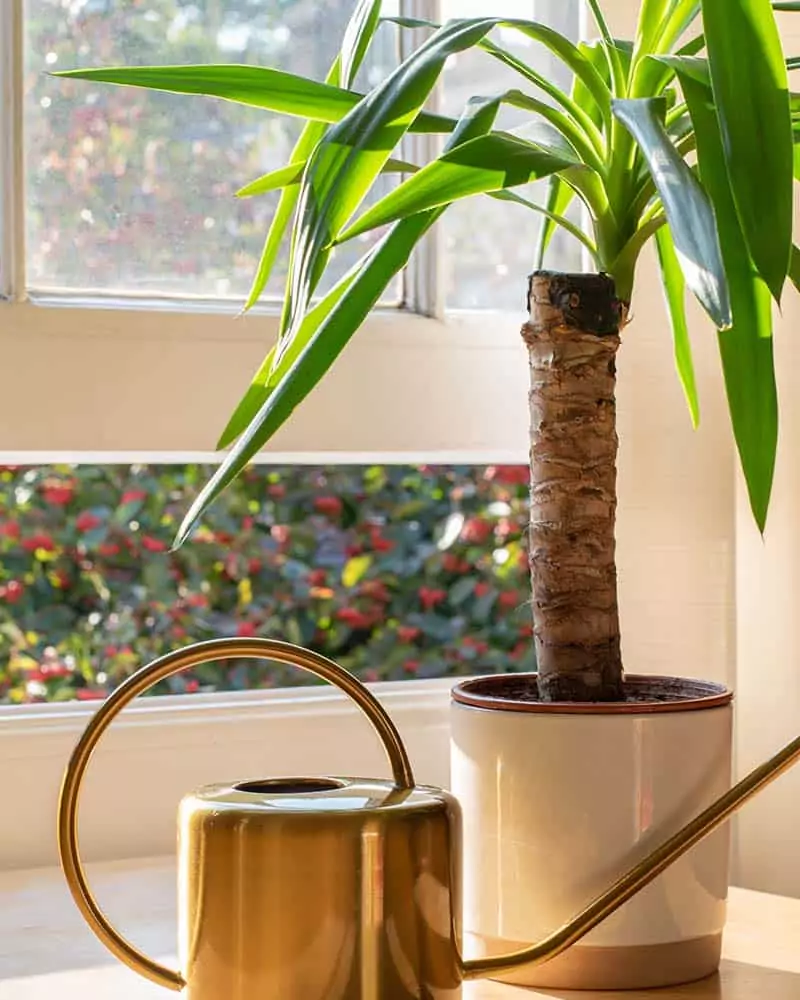
Yucca plant doesn’t need a lot of water and high humidity. However, the plant will benefit from occasional misting. The ideal temperature range for the Yucca plant is between 65 and 75 degrees, but slight deviations are tolerated.
Yucca needs monthly fertilization during spring and summer. You can pick any liquid fertilizer. Keep the plant away from pets and children, because Yucca is mildly toxic.
12. Haworthia
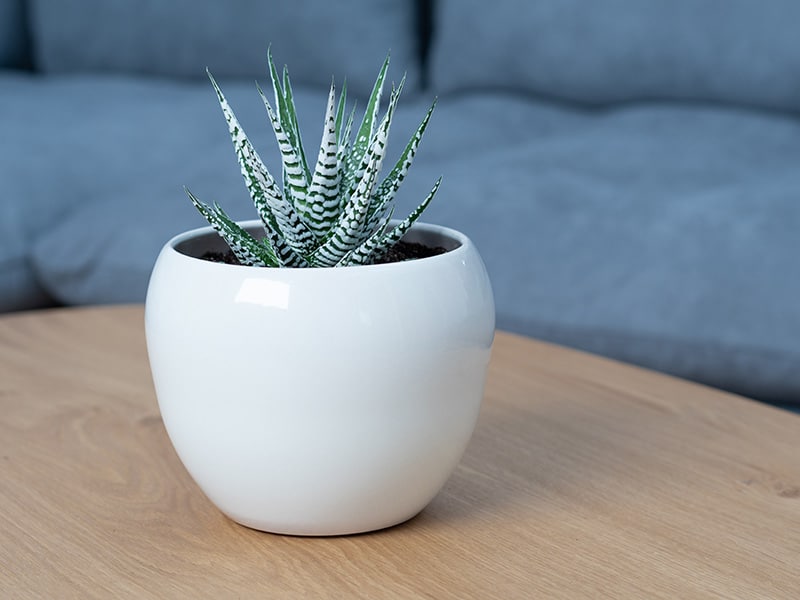
Haworthia is a tiny succulent with easy-going nature. The succulent has solitary stems and rosette-shaped foliage. In some cases, foliage can get dark green and firm. Some Haworthia plants feature soft and translucent leaves.
The succulent prefers low water and moderate lighting. If your Haworthia is exposed to too much sunlight, you will notice white spots which turn red on the foliage.
Haworthias exposed to a lot of light need water once every three weeks. Those in partial shade need even less moisture.
Surprising solution to Haworthia rotting problems.
13. Sago Palm
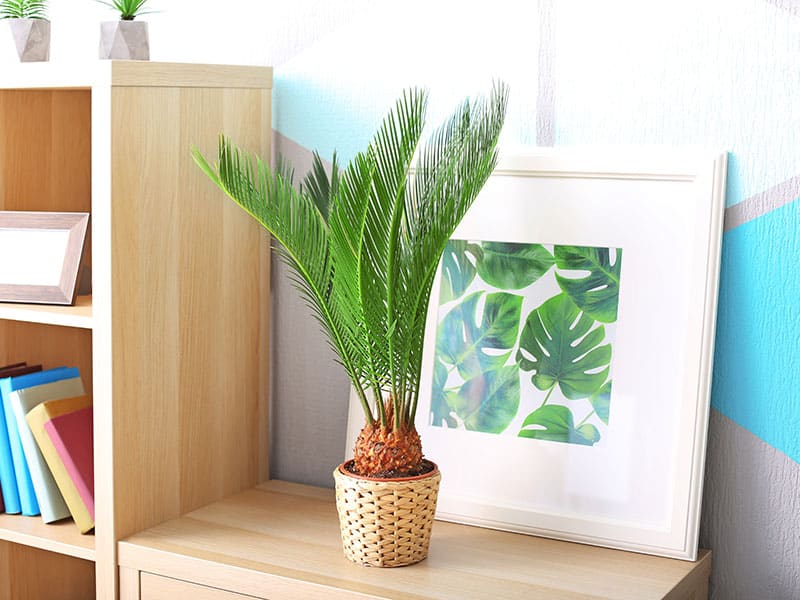
Sago palm is a striking palm that prefers a bright spot. But, never put your Sago palm on direct light because it can burn the leaves. Growing Sago palm in the shade will result in unhealthy palms with scarce foliage.
Keep the plant indoors when the temperatures are low, and bring it on the patio in dappled shade in the summer.
Excellent soil drainage is a must, and the Sago plant will also benefit from slightly acidic soil.
14. Jade Plant
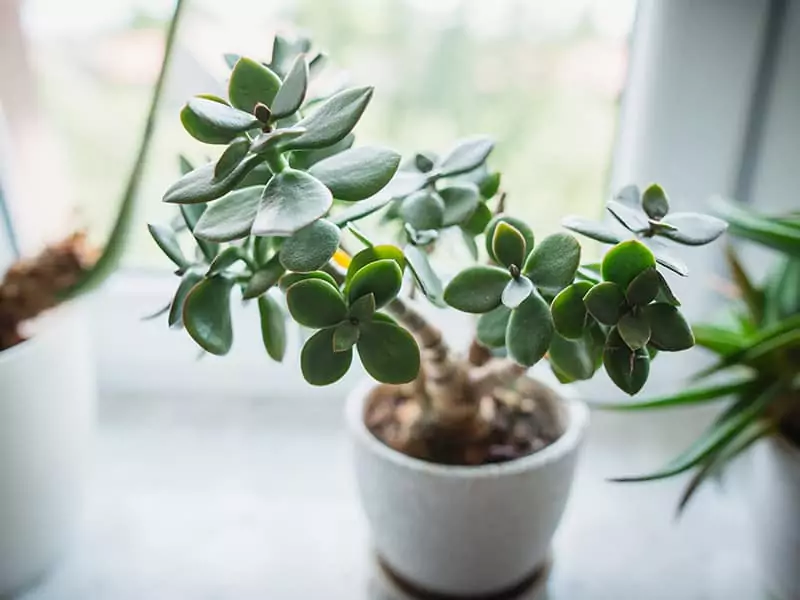
A Jade plant needs a lot of sunlight, at least four to six hours per day, and minimal moisture. Only water the Jade plant when the top soil layer is dry to touch.
The Jade plant has a slow growth rate and is often associated with happiness and prosperity. Some also call it the Money plant because it is believed to bring abundance to the owners.
15. Echeveria
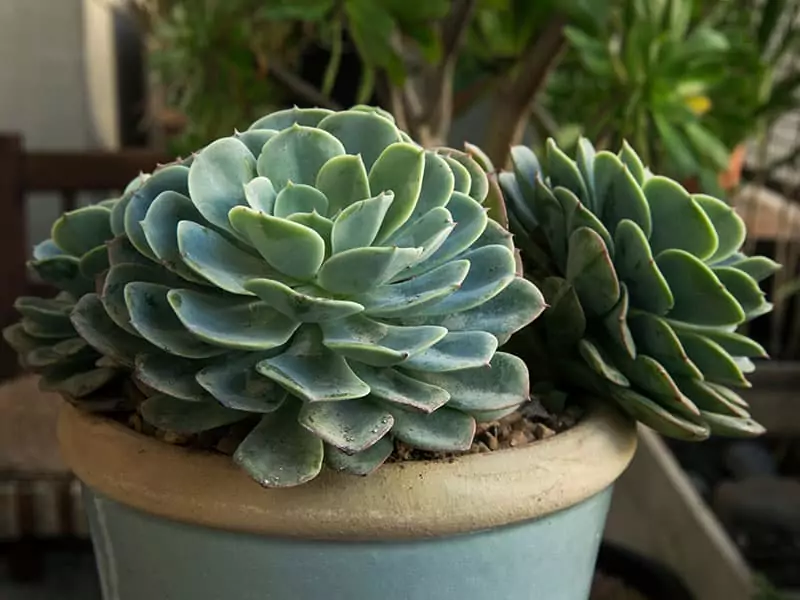
Echeveria features wonderful jewel-tone foliage and brilliant flower spikes. It is also one of the easiest succulents to grow with the most attractive rosettes and colorations.
Echeveria needs several hours of bright sunlight per day. In low-light conditions, Echeveria stretches its compact rosettes to the point where they lose shape completely.
The succulent needs minimal watering and requires good drainage.
16. Pilea
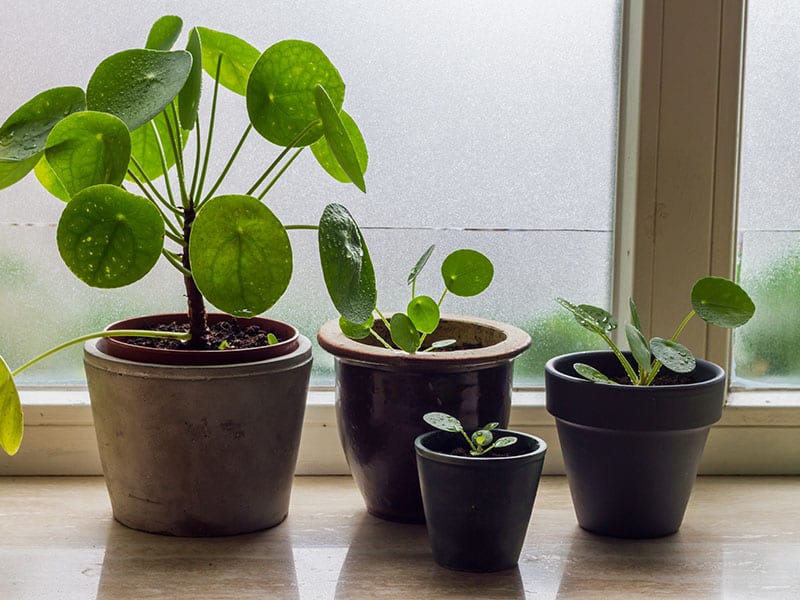
When growing Pilea, remember to rotate the plant once every two weeks so every inch receives lighting. Otherwise, the plant will grow lopsided!
Pilea is an easy plant to recognize because of the bright, coin-shaped foliage. Pilea is the perfect plant for beginners because of the simple care, excellent low-light and drought tolerance, and fast-growing rate.
17. Aloe Vera
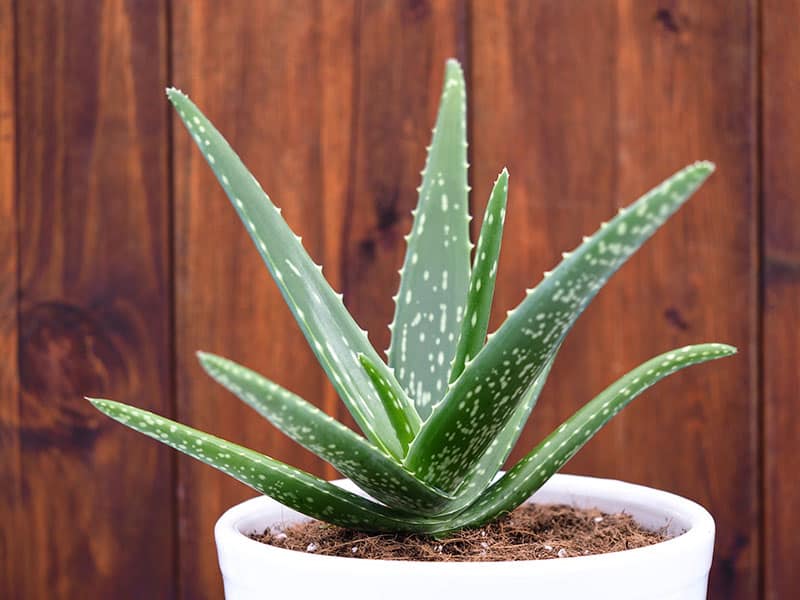
You can grow Aloe Vera at home and harvest those thick and fleshy leaves whenever you need an extra boost of moisture and care on your skin. Aloe Vera is succulent with minimal watering requirements.
When starting Aloe Vera at home, pick a pot two inches larger than the plant’s root ball. Put the pot in bright, indirect light for best results and ensure the temperature remains consistent in the room.
Harvest the leaves when they are at least six inches long.
18. Spider Plant
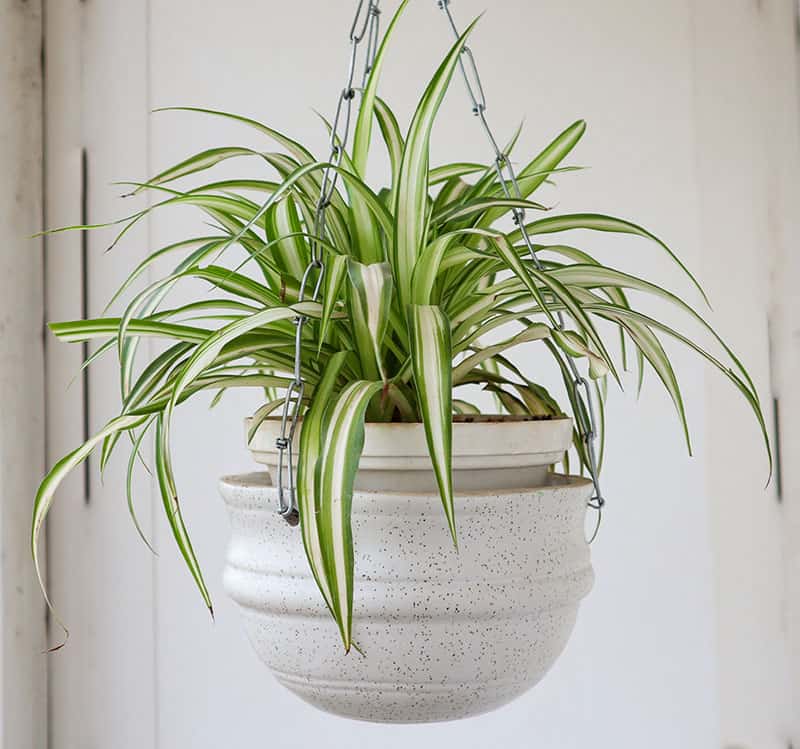
Spider plant isn’t demanding. Put the pot in a bright room with comfortable temperatures. Water once every ten days and even less in winter. Remember to use distilled water for your Spider plant to prevent damage from too much fluoride.
Watch the plant foliage for brown spots because it signalizes that your Spider plant is overwatered. In rare situations, brown leaves are a sign that the plant needs more water. Check the consistency of the foliage to determine whether the plant needs more water or not.
19. Cast Iron Plant
The Cast Iron plant got the name because of its tolerance to extreme conditions. Those include extreme drought, low light, and severe neglect!
Cast Iron is a hardy plant with a slow growth rate. You can start it by division in organic soil and yearly dose of plant food. The Cast Iron plant is also resistant to cold and light frosts.
20. Burro’s Tail
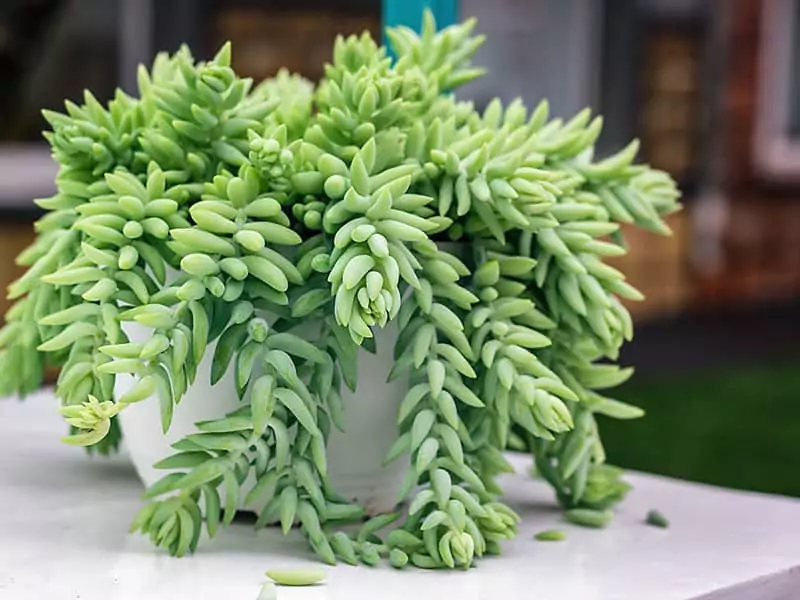
Burro’s Tails is a wonderful and delicate succulent, also known as Donkey’s Tail. The scientific name of this trailing succulent is Sedum morganianum. It is one of the most attractive plants to grow in hanging baskets.
Burro’s Tail grows best in dry and sandy soil with excellent drainage. Terra cotta containers with drainage holes are great for growing Burro’s Tail. The succulent needs bright and direct light to grow to its full potential!
21. Verbena
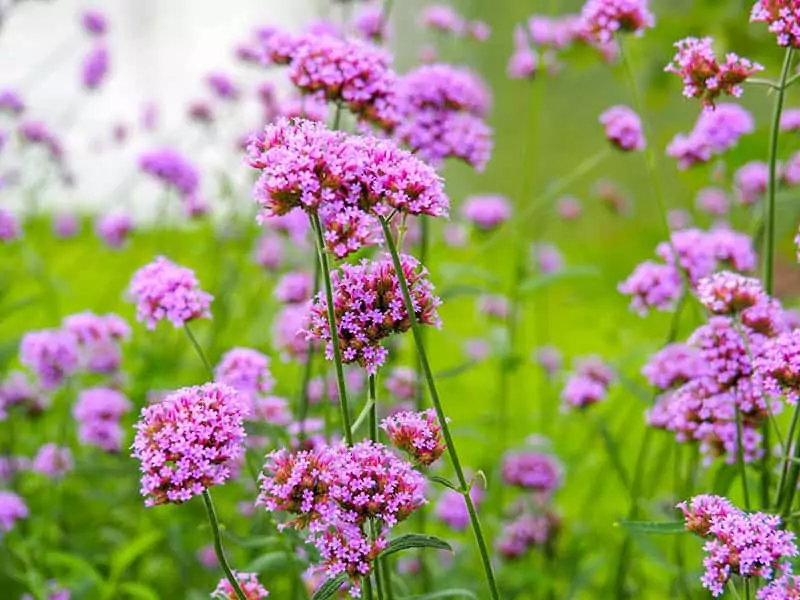
Once the flowers appear, Verbena becomes drought resistant. However, if you water the plant once every ten days, the blooms will be improved.
Overall, Verbena is a low-maintenance plant. You can plant it in April and it will provide lovely bloom all summer long!
Cut the plant back in the winter to induce regeneration and get it ready for the new growing seasons.
22. Moss Rose
Moss Rose is known to thrive in harsh conditions. The plant can withstand drought but will benefit from occasional water, especially during hot and dry weather.
It needs full sunlight to bloom, so plant it in a full sun location. In general, Moss Rose doesn’t need deadheading as a rule. However, if your Moss Rose doesn’t provide sufficient blooms, you can remove spent flowers to encourage new growth and additional blooms.
23. Agave
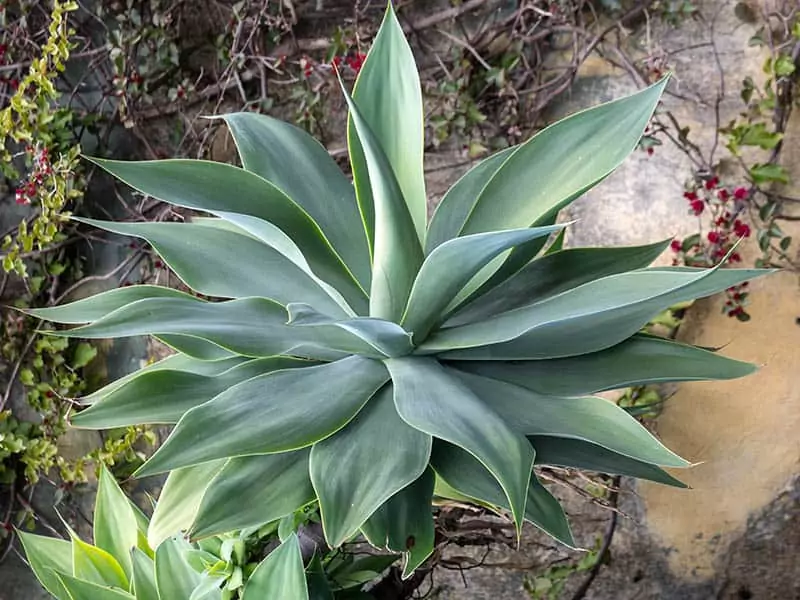
Agave is a large succulent plant that thrives in rocky and sandy soil. Also, it needs excellent drainage and watering during the establishment period. As your Agave plant gets older, it becomes more drought tolerant.
Adult Agave plants can survive a long time without rainfalls! But, Agave is sensitive to frost and cold temperatures. Therefore, only grow it outdoors if winters in your climates are mild.
24. Lithops
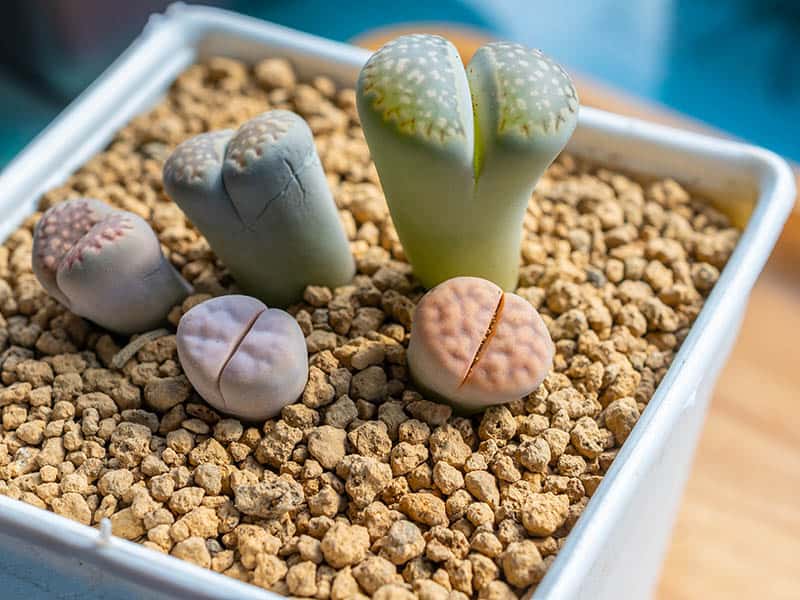
Lithops don’t look like typical plants. Instead, these little succulents look as if they were rocks! Lithops are resilient plants that can survive drought very well.
These unusual succulents go dormant in summer, and at some point, they need even less watering. Lithops can tolerate harsh sunlight but can also adapt to partial shade. You can grow them in pots or the garden.
25. Lantana
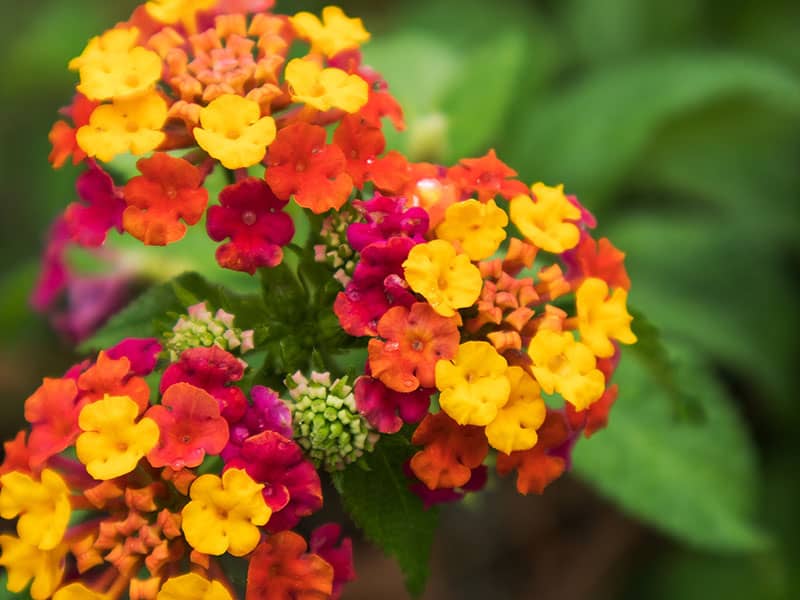
When you first plant it, Lantana needs regular watering. But as soon as the plant gets established, Lantana needs minimal moisture to thrive.
Overall Lantana care is simple. Still, pruning is an important step when taking care of Lantana. Remove old branches, dead stems, and flowers to induce branching and continuous blooms.
Also, if the plant produces berries, you need to remove them if you want to ensure the most beautiful flowers.
26. Blanket Flower
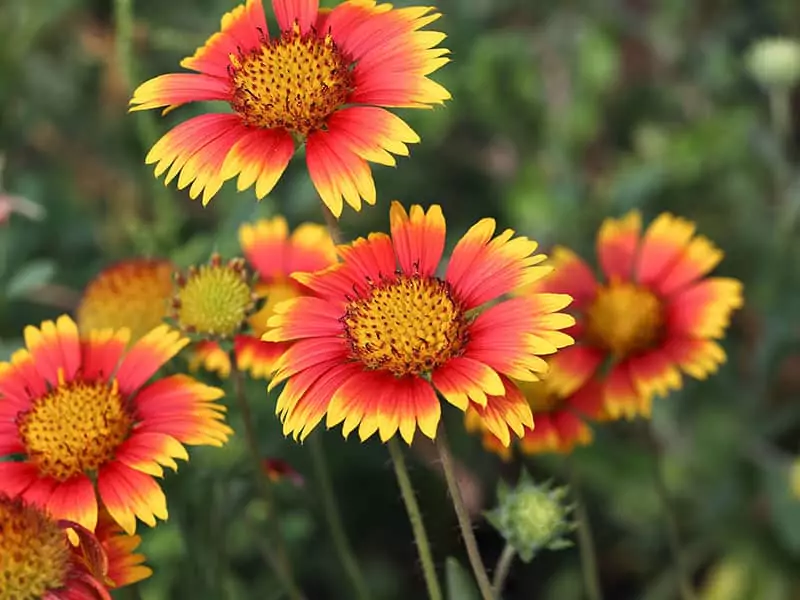
Blanket Flower aka Gaillardia is a low-growing perennial that forms mounds on the ground. Therefore, during the blooming season, Gaillardia looks like a colorful blanket on the ground!.
You can start Blanket Flower from seeds or established nursery plants. It is a reliable bloomer, which can survive in various climates without any specific issues.
27. Emu Bush
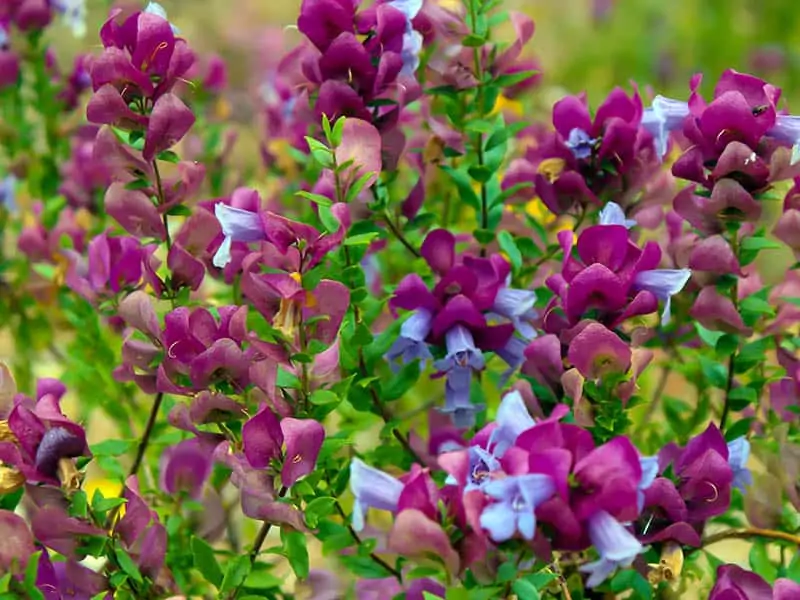
Emu bush needs full sun or partial shade location in the garden. It is a small shrub with a lovely purple flower, native to Australia. Emu bush thrives in dry gardens and it attracts common pollinators.
Juvenile plants will benefit from moisture. But adult Emu bushes only need a minimal amount of water to thrive.
Emu bush isn’t suitable for cool climates and grows best in warm and dry areas.
28. Bougainvillea
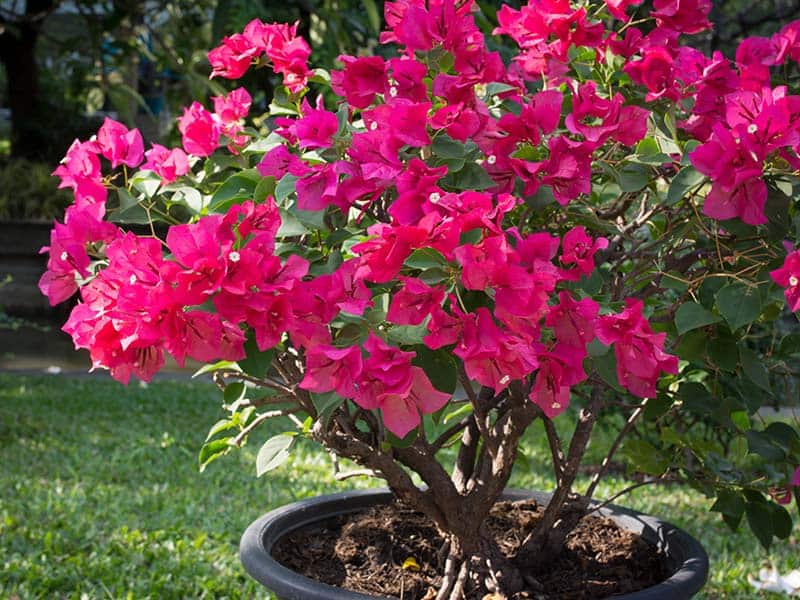
Striking Bougainvillea is relatively easy to care for if you fulfill the primary conditions – plant it in full sun. Bougainvillea in the shade doesn’t provide many blooms, and they aren’t as beautiful as possible.
Other growing requirements include well-draining soil and gentle root care. During the establishing period, Bougainvillea needs watering. But established plants are relatively drought tolerant.
Don’t forget to provide trellis as a support for your rich, blooming Bougainvillea!
29. Beardtongue
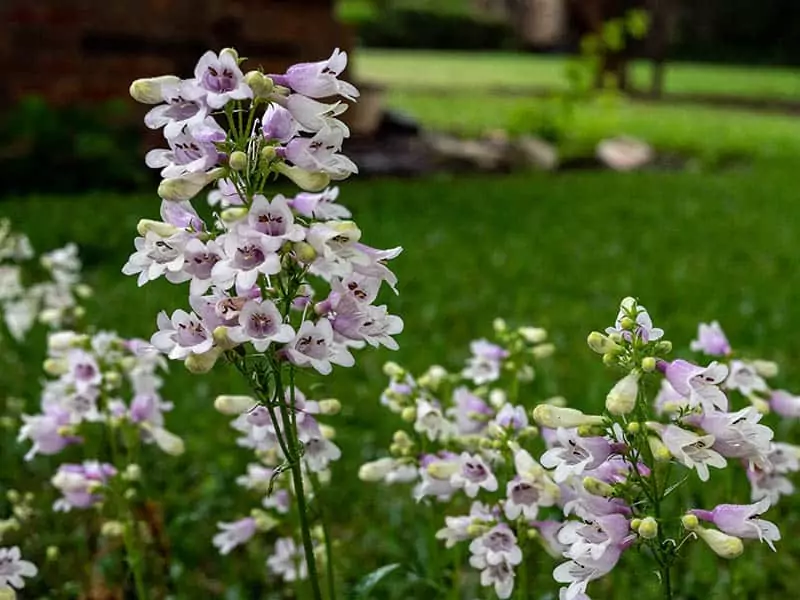
Beardtongue belongs to a huge genus of plants that includes more than 250 ornamental varieties. It is an easy plant to start from seeds, but you need to plant it in early spring. Allow the seeds from ten to 21 days to germinate.
The ideal location for Beardtongue is full sun. In the shade, Beardtongue doesn’t grow upright. This lovely ornamental plant grows best in the USDA zones from three to nine. It can tolerate drought very well.
30. Wallflower
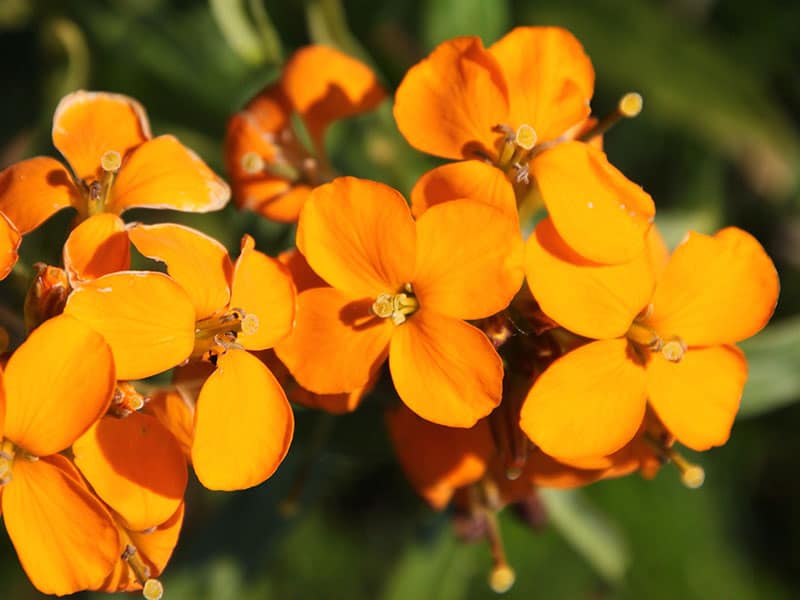
Wallflowers are praised for their beautiful and beautifully scented flowers. People grow them as beautiful bedding biennials or colorful perennials. However, Wallflowers don’t provide flowers in the first year after planting.
Plant them in full sun location, even though Wallflowers can survive in dappled shade. You can start them from cuttings or nursery plants.
31. Sage
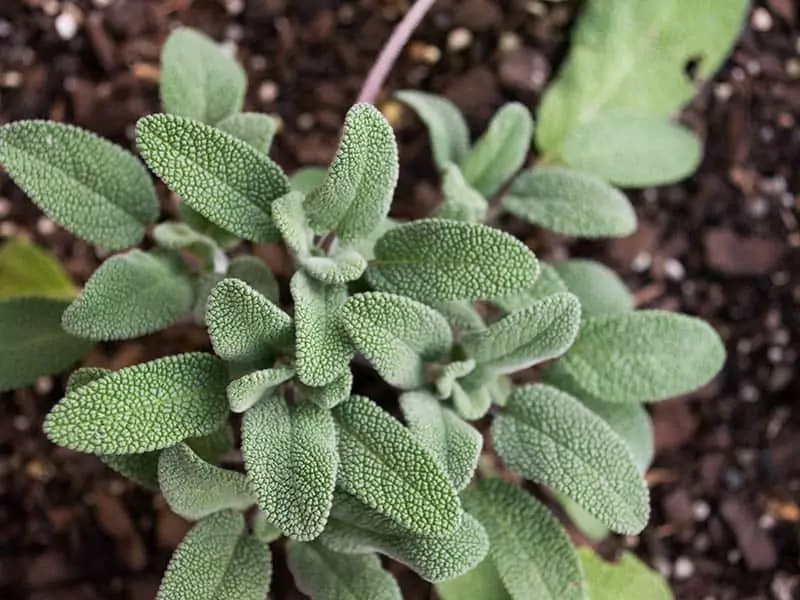
Sage belongs to the same family as mint. The basic care is simple, and the plant grows well in containers, outdoors and indoors. Sage is a versatile plant, popular in the kitchen, and used for medicinal purposes.
You can start it from seeds, but the plant will need several years to establish.
Sage has excellent drought tolerance. In extreme drought conditions, Sage may wilt. But as soon as you water it, the herb will perk up.
Tips on growing and propagating Sage.
32. Sedum
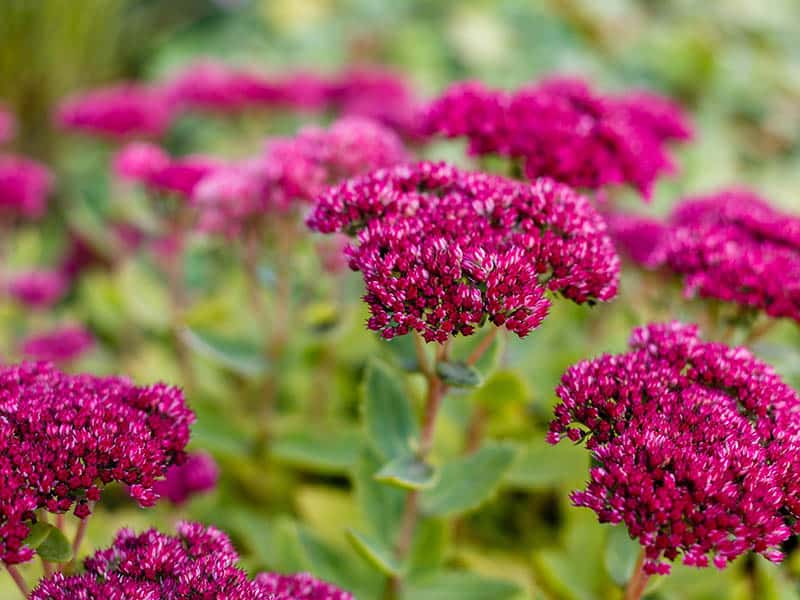
Sedum grows in harsh and dry conditions. This succulent features thick and fleshy leaves and is sensitive to overwatering. When watering Sedum, avoid quick drinks. A long, slow drink is a better option for Sedum!
Also, don’t forget that soil needs to dry completely between waterings for the best results. Sedum prefers full sun, especially if you live in a climate with colder autumns and winters. Garden Sedum might need protection from rainfalls to prevent overwatering.
33. Poppy
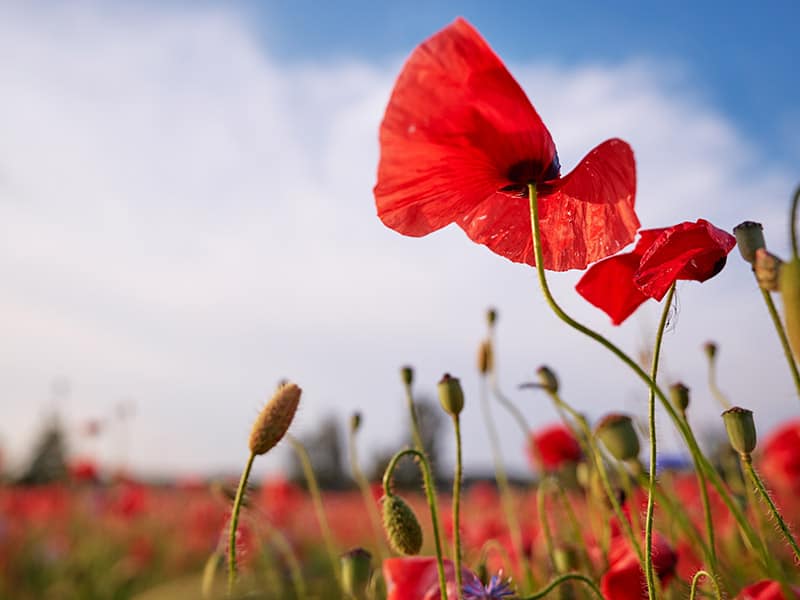
Poppies are adaptable to a variety of conditions. These lovely flowers grow where other plants cannot survive! Poppies are drought-tolerant plants that grow in a wide range of soils.
The trick you can apply when growing Poppy flowers is to regular deadheading. It will encourage more blooms!
34. Rock Soapwort
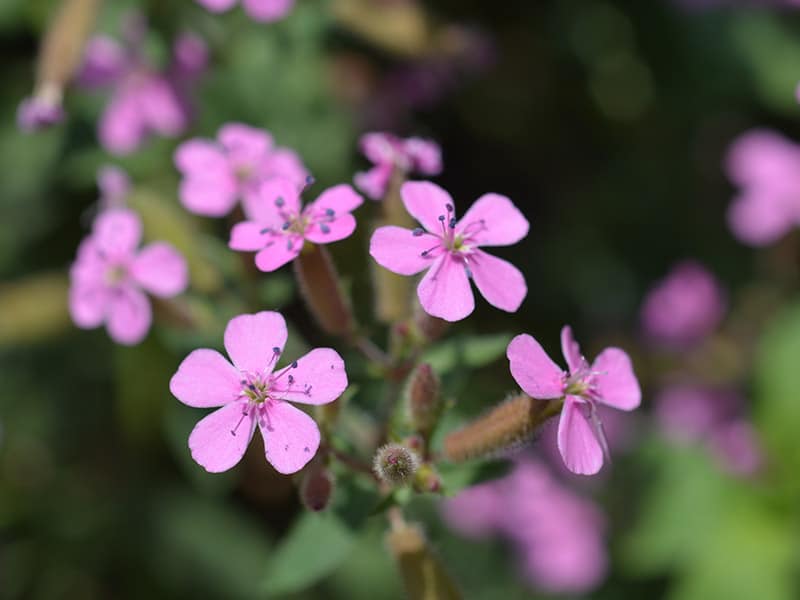
The Rock Soapwort is an interesting and attractive herb that usually gets between one and three feet tall. Soapwort is a simple plant to grow. You can grow it from seeds or young transplants. It is a great plant to add to empty beds, rock gardens, and woodland edges.
Soapwort self-sows and it is a perfect low-maintenance ground cover.
35. Desert Rose
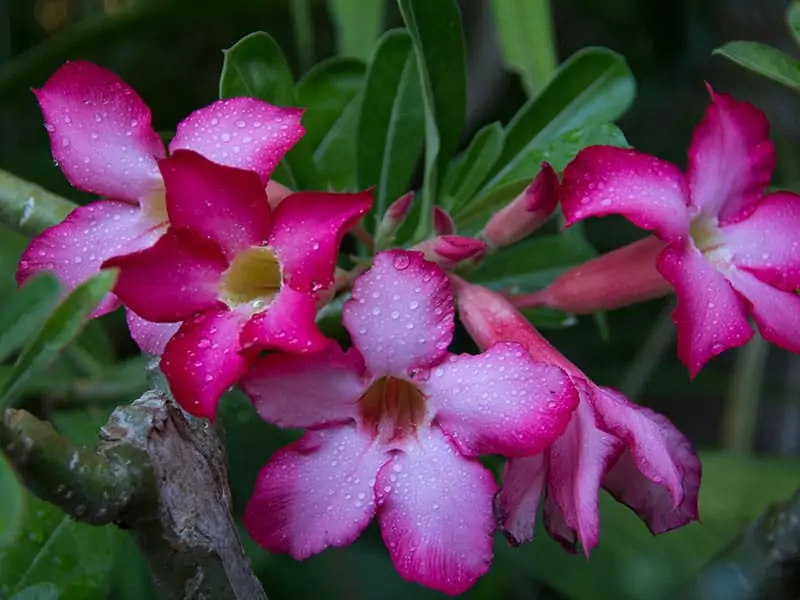
As the name suggests, Desert Rose is a plant with low-moisture needs. Similar to other desert plants, Desert Rose prefers warm temperatures. In mild climates, you can grow Desert Rose in partial full sun.
However, in tropical areas, your Desert Rose will thrive in partial shade, where it is protected from the harsh afternoon sun.
36. Lavender
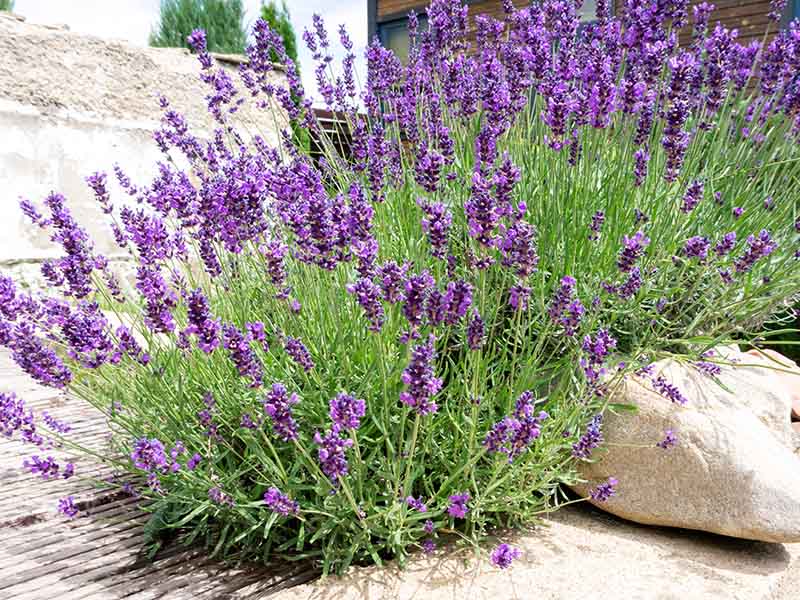
Charming and aromatic Lavender is a drought-tolerant and low-maintenance plant. Too much moisture leads to fungal disease and root rotting.
This Mediterranean-native grows best in sandy soil with a pH from 6.0 to 8.0. Grow Lavender in full sun location, where the purple aromatic herb will get at least six hours of sunlight per day.
Because Lavender is relatively tolerant to cold and frost, you can grow it almost anywhere!
37. Globe Thistle

Growing Globe Thistle from root cutting is relatively simple. You can plant Globe Thistle cutting in loosened, slightly acidic soil and water well until the plant develops. Adult Globe Thistles don’t have excellent drought resistance and need only minimal moisture.
Good soil drainage is a must. Other growing conditions include moderate sunlight exposure and occasional plant fertilization.
38. Milkweed
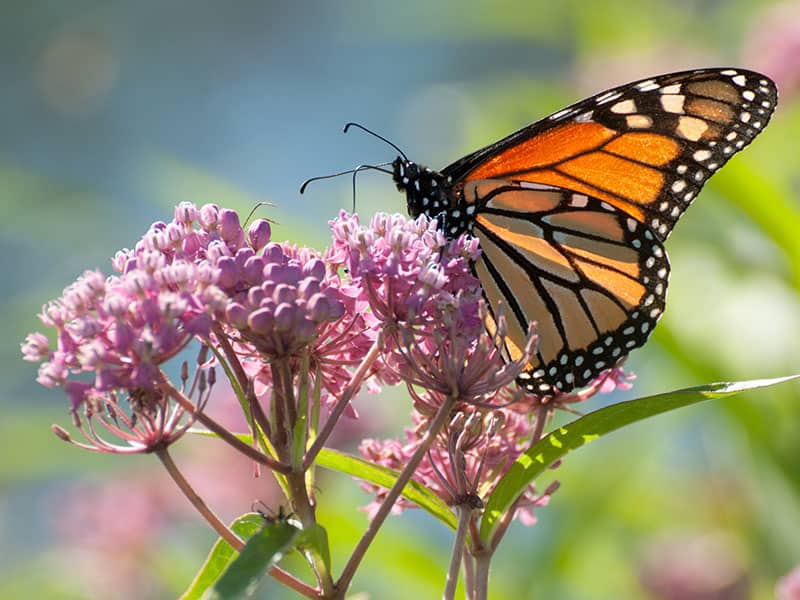
Milkweed is one of the easiest plants to start from seeds. You can sow it directly in the ground in the spring when there is no danger of frost.
Milkweed grows well in average soil. However, when choosing Milkweed pick Tropical varieties for dry gardens, and Swamp cultivars for meadows.
Tropical Milkweed grows best in a dry and loamy soil. It grows well on its own, without too much water and fertilizer.
39. Red Valerian
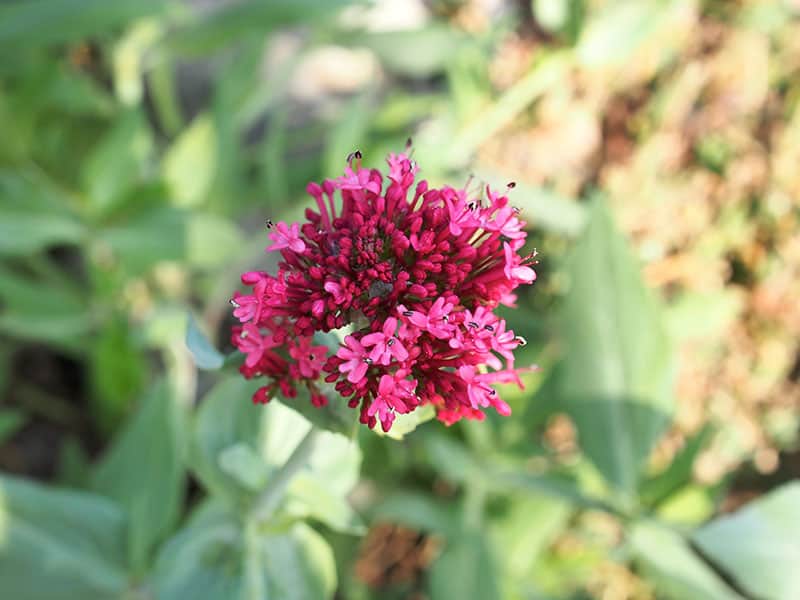
If you are looking for a bright blooming plant to grace your summer garden, don’t skip Red Valerian. It is famous for its bright blooms and excellent adaptability to soil qualities.
You can sow Red Valerian seeds directly in the ground or the sowing tray and later transplant seedlings in the ground. Spring or autumn are perfect seasons for planting Red Valerian. Keep a ten inches distance between seeds to ensure every plant gets enough space.
Growing Red Valerian form seeds.
40. Coneflower
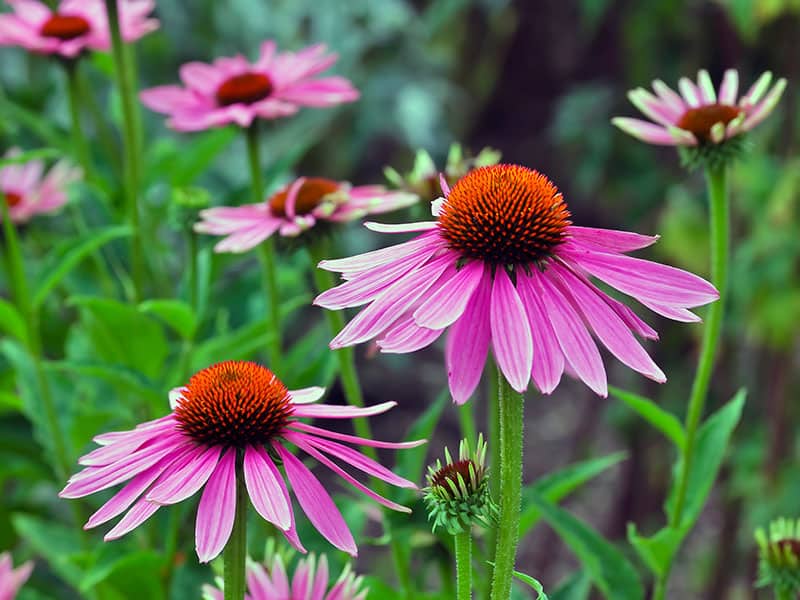
There are multiple Coneflower varieties, and each of them is adored for its bright blooms and simple care. Early fall or early spring is an ideal season to plant Coneflower. Most varieties will successfully grow in USDA hardiness zones three to nine.
Pick a spot where your Coneflowers will receive enough sunlight, at least six hours per day. Loose, well-draining soil is best for Coneflowers, but these hardy plants will survive even in heavy clay and rocky soil.
Pick Low Water Plants For Beautiful Landscape and Easy Decor
If you know your plants, gardening becomes easy! Low water plants, in most cases, thrive on neglect and are an excellent choice for people who travel often, are rarely at home, or are just forgetful of their plants!
Which low water plants are your top picks? For indoor use, I prefer String of Pearls and Snake plants!
If you enjoyed the article, show support and give it a thumbs up!
